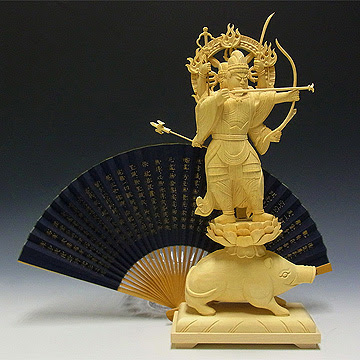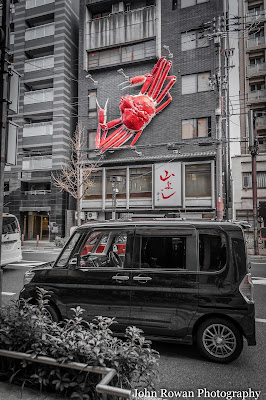 |
| Banner over a convenience store in Kyoto |
Even when I lived in England, I did not like Valentine's day, the commercialisation in my opinion makes it fake. Giving a loved one a gift is wonderful: but being dictated as to not only when to, but what kinds of gifts you can give, takes away both the romance and the true spirit of giving. Recently I saw a great video by the Welsh Pagan Witch, Tylluan Penry (linked below), she talks about both Valentine's day in regards to paganism and commercialisation. This inspired me to write about Japanese Valentine's day.
I do not think Valentine's day really has a connection with paganism, but at least in Europe there is a connection to Christianity. Saint Valentine was said to have married Christian couples and was executed by the Romans for this. Here in Japan there is no religious or spiritual meaning to the day. But for Japanese chocolate manufactures it is the most important day of the year. Some sources say they make half of their yearly profits from this day alone. Valentine's day first came to Japan in 1936, when the Morozoff chocolate company aimed advertisements at the expat community in Japan. But it really started in 1958, when the Isetan department store chain started to promote it.
Basically, it a day when women give chocolates to men and not just to there boy friends or husbands. There are many different types of these chocolate gifts. First 本命チョコ
Honmei choco, this is for someone you have real feelings for. An off shoot of this is 友チョコ
tomo choco, meaning friends chocolate, where women give their female friends chocolate. But now (in my opinion) it starts to get a little strange. Next we have 義理チョコ
giri choco, meaning obligation chocolate given to male co-workers, male bosses or in my case male English teachers. On Valentine's day I will receive an obscene amount of chocolate. Some (I hope) from truly grateful students, but certainly a lot out of obligation. But I really hope none of it is チョウ義理チョコ
chyou giri choco, ultra obligation chocolate.
So in Japan, Valentine's day has not been commercialised, because it was never part of the culture here. It was simply imported for commercial reasons and for the companies it has been a big success. But in the 1980s those companies realised that it could have been more successful. They had left men out of the equation, men were not spending any money. So a new day was invented with built in meanings in regards to how much money the men spent. The day was named "White Day"(March 14th) maybe after it's purity or maybe after it's pure commercialism. A man in a relationship should spend between two and three times more than his partner spent. To spend the same amount is to show friendship, so in a relationship it implies a cut. To not return a gift means the man sees himself as superior to the woman.
I think giving a gift is one of the best ways to show love, gratitude, or respect. It is also spiritually uplifting. But I would say there are 363 better days in the year, than Valentine's Day and White Day to do it. Interestingly, Valentine's day is not the most romantic day for dating in Japan, that goes to another western import, Christmas Eve.
Youtube video by Tylluan Penry about Valentine's day.









